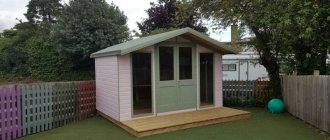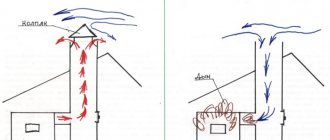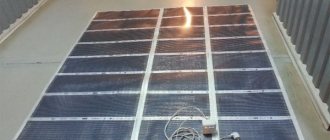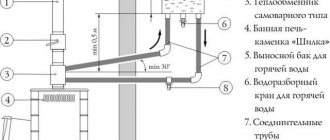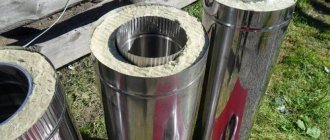What it is
A bio-fireplace resembles in appearance an ordinary fireplace with a live fire, but it does not require any wood or coal. Instead, biofuel is used, which is absolutely harmless to people.
The main component in a biofireplace is the fuel tank, and it performs three functions:
- like a tank (stores fuel);
- like a firebox (supplies fuel to the combustion zone);
- Helps maintain safe operation of the entire device.
Modern biofireplaces without a chimney come in different types and shapes, but the main rule for these devices is minimalism. There are no accessories or decorations, the geometry of the forms is simple and clear. Biofireplaces are made from the latest building materials:
- made of plastic;
- of steel;
- made of aluminum;
- and made of glass.
The smallest version of a bio-fireplace is a fireplace-candle; it is indispensable in small rooms or in a country house, but can still add warmth and comfort to their interior.
Types of environmentally friendly biofuels
The prefix “BIO” is now often added to labels based on the rules of successful marketing. Issues of preserving the environment and cleanliness are in fashion today throughout the planet. Bio-products, bio-cosmetics, bio-based detergents, purification and bio-energy stations and even bio-toilets. It also came to fireplaces and fuel for them.
Structurally, biofuel fireplaces are equipped with a standard burner and a tank for liquid fuel. Adjustment of the flame size and fuel combustion rate is carried out using a damper.
If it is completely closed, then the fire in the biofocus simply goes out by itself. In general, a bio-fireplace is a great way to heat a room and add a touch of coziness to it from the glow of the “bonfire”.
The biofireplace differs from its wood-burning ancestor in the fuel used to produce the flame - the logs in it are replaced with smokeless fuel in the form of a liquid
Obtaining biofuel for such a fireplace involves the use of renewable natural resources, environmentally friendly technologies and raw materials during production. Plus, burning it should not produce harmful emissions into the atmosphere. Humanity cannot yet survive without combustible fuel. But we can make it less harmful.
There are three types of biofuels:
- Biogas.
- Biodiesel.
- Bioethanol.
The first option is a direct analogue of natural gas, only it is not extracted from the bowels of the planet, but is produced from organic waste. The second is made by processing various oils obtained by squeezing oilseed plants.
As such, the fuel for biofireplaces is the third option - bioethanol. Biogas is mainly used to generate heat and electricity on an industrial scale, while biodiesel is more suitable for automobile internal combustion engines.
When burned, pure ethanol gives a blue, not very beautiful flame, so additives are added to fireplace biofuel to produce a red-yellow hue
Home fireplaces are most often fueled with bioethanol based on denatured alcohol. The latter is made from sugar (cane or beet), corn or starch. Ethanol is ethyl alcohol, which is a colorless and highly flammable liquid.
But most importantly, when burned, it does not emit odors, carbon monoxide and soot. Simply an ideal option for city apartments, in which it is almost impossible to install a chimney pipe.
Those who want to make a bio-fireplace with their own hands will be helped by a step-by-step guide, which we recommend that you read.
Peculiarities
Biofuel fireplaces without a chimney have many features:
- aesthetic in appearance;
- heat efficiently;
- they are easy to maintain;
- work on eco-friendly materials;
- many design options, which makes it possible to combine with any interior;
- no chimney needed;
- suitable for any room;
- The whole design is very simple and easy to use. There is no need for any pipes or other bulky components, and the device itself can be moved to any place in the house if desired;
- the burner into which biofuel is added is made of non-flammable material (steel or ceramic), which is very important for fire safety.
Construction and design of a biofireplace
The design of an eco-fireplace consists of a fuel module and a decorative body (metal, stone, glass-ceramic or any heat-resistant material).
The device body can be either open or closed. The flames are insulated with fireproof glass in the form of a protective screen.
The firebox looks like a burner or is a fuel block - a more complicated device. For a fuel module, the most important indicator is its power, by which the power of the device itself is judged.
The operation of an eco-fireplace begins with filling the heating tank with fuel and lighting the wick. The flame is even and bright, and there is no smoke from the chimney. The intensity of combustion is regulated by a special grille (slider).
A distinctive feature of a biofuel fireplace without a chimney is that it will take only about twenty minutes to heat a room measuring one hundred square meters.
Device
The most important part of a biofireplace is the burner. The base and firebox, unlike real appliances, are only decorative elements. Often the burner can be purchased separately. It is installed in the combustion hole in the fireplace or false fireplace. This design allows you to easily transform an ordinary device into a biofireplace.
There are two main zones in the biofireplace. These include:
- Furnace part.
- Decorative elements.
Decoration
The devices are decorated in different ways. Style is possible from classic to hi-tech.
Traditional models are decorated with strict portals, or a frame can be made of wood, metal, or stone. The burner is often hidden in a chamber behind glass facades.
There are many designer exclusive bio-fireplaces. Original unusual shapes of different sizes, any colors, made from various materials. Often styles and functions are mixed and very interesting products are obtained.
You can design a bio-fireplace with your own hands. There is also the opportunity to make biofuel yourself.
Need to know! You can make biofuel yourself, but it is better to buy it ready-made. At home, it is not always possible to accurately calculate the proportions of alcohol and other components.
Advantages
- The advantages of biofireplaces are, first of all, their biofuel. It is based on pure ethyl alcohol processed into denatured alcohol.
- This substance burns no worse than ordinary alcohol, burning 1 liter of fuel in five hours, and during this time the same amount of carbon dioxide will be released as a person would exhale in the same period of time.
- There are also models of biofireplaces that provide pleasant aromas with which they fill the room.
- A biofuel fireplace does not need a hood because the combustion of fuel does not produce soot, gas, or smoke.
- The efficiency of this device is almost 100%, and the heat does not disappear from the room.
- Reliability of the material, simple installation and operation. Reliable flame insulation.
- Complex prevention is not needed.
- There will be no need for complex work associated with chimney installation.
- Installation of a biofuel fireplace does not require permission, etc.
How is a biofireplace installed?
The method of installing a biofocus primarily depends on its design. If you purchased a portable floor model, then you should assemble it in accordance with the instructions and start using it. Make sure that the room where such a fireplace will burn has sufficient air flow and corresponds to the specified area for a particular fireplace.
For built-in models, installation is more difficult. If there is a suitable niche in the room, then you are lucky, you can install a fireplace directly into the wall. But if there is no niche, then you can install a bio-fireplace in plasterboard, or rather a portal made of plasterboard or gypsum fiber board. GVL is a non-flammable material, so constructing a portal from it is absolutely safe.
To ensure that the installation of the bio-fireplace goes smoothly, first assemble it completely. This will help you take the correct measurements for making the case. Some built-in models include platbands in addition to fire-resistant glass. For their correct installation, clear markings are required. If there are no platbands, then the body can be covered with stucco, decorative stones, brickwork, etc.
Installing a bio-fireplace in a cabinet is another installation method. In this case, the body of the bio-fireplace is mounted directly into the countertop of the cabinet, that is, on its surface. Considering that a biofireplace produces a large amount of heat, such a cabinet will have a special device. If you make a countertop from traditional materials, then due to the heat they will rise very quickly, and it is also unsafe. The surface of the cabinet where the hearth is built in should be made of metal. The metal body of the eco-hearth itself also needs to be thermally insulated. In this case, there is no need to lay out thermal insulation over the entire cabinet; just cover the box under the bio-fireplace.
Installation rules:
Do not place the bio-fireplace close to the wall
The distance from the glass to the wall must be at least 2 cm. The hanging fireplace is mounted at least 0.3 meters from the floor, and the distance to the ceiling must be at least 1 meter. When installing the fireplace, use a level; it is important that it is level, otherwise it may affect its operation.
For what reason do they prefer a biofireplace?
The liquid fuel eco-fireplace in question has a huge number of positive characteristics and absolutely no disadvantages. Firstly, it in no way pollutes the atmosphere or disturbs the environment and ecology, unlike fireplaces with a built-in chimney originally. Secondly, the nominal cost of such a fireplace is significantly lower than that of a conservative fireplace with a chimney available. The materials used are of the highest quality and modern. If you are not impressed by the usual flame, then you can at any time put a special ceramic dummy of firewood in the hearth, which will constantly remind you of a real traditional fireplace. You will also significantly save your money on fuel, because one refueling will be enough for at least three whole hours a day. Installation of a fireplace can be carried out in a timely manner both in a city apartment and in your personal private country house. For cladding, you can use not only modern, but also classic options.
Rules for the safe operation of a biofireplace
Although manufacturers have tried to make the device as safe as possible for home use, there is still a certain list of rules that are important for owners of eco-fireplaces to follow.
The simplest thing is not to leave a working fireplace unattended and do not place it near flammable objects, for example, near curtains, under hangers with clothes, wooden or plastic shelves and flammable accessories.
Do not forget that despite its decorative accent and the presence of a protective screen, the biofireplace remains a device with an open flame, and therefore a potentially dangerous device
In addition to the obvious rules, there are also specific nuances, for example:
- Install the device only on a reliable and as flat surface as possible to prevent accidental tipping (by the way, expensive devices have a special flatness sensor that will help determine the curvature of the surface no worse than a building level).
- Pour biofuel only into a cooled, idle device and never replenish reserves during combustion.
- If the flammable mixture spills during refueling, immediately wipe the area dry to prevent spontaneous ignition.
- Use only heat-resistant accessories for decoration, such as stones, metal, glass or ceramic models.
- Monitor the fuel level in the tank and try to fill the liquid for exactly one use, otherwise the remaining ethanol will poison the air in your home with its vapors.
- To light a fire, use a special metal fireplace lighter with a long handle.
And lastly, don’t forget about ventilation. Although a biofireplace does not require a hood and does not evaporate harmful substances, when any flame burns, carbon dioxide is released.
Be sure to ventilate the room after operating the device and replenish the burned oxygen reserves.
Varieties
In bad weather, bio-fireplaces are increasingly becoming a decoration for the home. Biofuel fireplaces with live fire and without a chimney are bionics, that is, a combination of biological raw materials and technical achievements.
Biofuel boilers received the prefix “bio” because they use renewable biological resources.
Floor-standing
This fireplace is installed against a wall or in the center of the room. It can be made of natural stone, ceramic, glass, steel and even wood. But preference is given to glass and metal - such models are the most sophisticated.
Mounted
The attachment is not made more than a meter long, with the exception of an individual order. This product is up to 25 cm deep and is suitable for placement in a wall niche.
Tabletop
A portable fireplace suitable for placement on any desk or coffee table.
Street
This bio-fireplace can be installed near the house, for example, in the country. These are large and quite heavy fireplaces.
Built-in
These fireplaces are installed in a niche or in a small wall opening, which are usually agreed upon during the construction of the building.
Angular
Located in a corner between two walls, such a compact device will take up minimal space. It can be floor or wall mounted.
General information
Making a biofireplace is a rather difficult undertaking that requires a significant investment of time and money. In addition, you need to possess the skills of such work or at least have a general understanding of it.
Biofireplace device
Before you make a biofireplace with your own hands, you need to study in detail how it works. Regardless of the type, it consists of the same elements. These include the following:
- Heating block. This element can be a fuel tank with a valve or an ordinary burner. Typically, the block is made of stainless steel or metal. The material chosen is quite thick, which helps protect the device from the effects of high temperatures and increase its operating life. The volume of the fuel tank can vary from 60 ml to 5 liters.
- Frame. Its shape and size directly depend on the interior design. Among the many models, open and closed cases stand out. In both cases, you can choose an original design that will fit perfectly into the room and help create comfort and warmth in it.
- Decorative elements. These small parts are made of fireproof materials and are intended to decorate the product. Most often, they can be various stones for burners, forged grates, ceramic logs and other attributes of fireplaces.
Types of products
Before you make a biofireplace for your apartment with your own hands, you need to decide on its location in the room. The type of product chosen will depend on this factor. There are three main options:
Tabletop. These are small structures that can be made in various shapes and decorated with miniature elements. The flame in them is located behind a special protective screen, which eliminates the possibility of accidental burns and the formation of a fire. Tabletop products perform only a decorative function and do not heat the room at all.
Decorative tabletop biofireplaces are safe to use
Wall-mounted. These bio-fireplaces are made of glass or metal. Their length can reach 1 meter, which will make the device quite heavy. Because of this, it is necessary to provide special fasteners to support the weighty structure.
Wall-mounted biofireplaces are suitable for any rich and status room
Floor-standing. This is the most beautiful and frequently used type of bio-fireplace. It gained its popularity due to its similarity to real wooden products. Floor-standing devices can be mounted in a wall or niche, or located in the corner of the room.
Floor-standing - the most common type of biofireplace
Advantages and disadvantages
A self-made eco-fireplace, like any other device, has its positive and negative sides. There are much more of the first, so you can safely choose a type and start installing it. At the same time, we should not forget about the shortcomings, as they can greatly affect the comfort in the room and create additional inconvenience for its owners.
The advantages of biofireplaces include the following:
Simplicity of design. The product does not require expensive additional equipment, chimney installation or ventilation. In addition, the installation is carried out without coordination with various authorities and neighbors.
Lightweight design. As a rule, even the largest models rarely weigh more than 100 kg. This feature allows you to simplify the process of transportation and installation.
Safety
By following basic safety precautions, the risk of injury or fire is minimized.
Environmentally friendly. During operation, the decorative device does not emit substances harmful to the human body and does not pollute the atmosphere
In addition, no smoke or soot is generated during operation.
Easy to maintain. Even a child can operate a biofireplace. To do this, you do not need to know the design features, but simply study the instructions provided.
Additional air humidification. This useful function is based on the release of carbon dioxide and water vapor.
Negative characteristics include:
- Low amount of heat generated. Even the most powerful and large-sized products are not able to heat the room in which they are installed.
- The need to frequently ventilate the room and provide good ventilation.
- High cost of the device.
Advantages of electric fireplaces
Such centers have a lot of advantages.
- Easy to use;
- Affordable price;
- Long-term, uninterrupted operation;
- Fire safety;
- Easy maintenance.
Important! There are several types of electric fireplaces. With halogen bulbs, steam effect and fabric flame imitation. There are also fireplaces where the image of a burning fire is a video recording.
Biofireplaces without a chimney in Moscow
Make a profitable purchase in the VamKamin online store.
Available to clients:
- convenient search filter;
- several ways to pay for your order;
- free delivery to shopping center for purchases over 20,000 rubles;
- certified products in stock/on order;
- Possibility of manufacturing a bio-fireplace according to individual sizes.
We work daily from 9 to 19 hours. Orders through the online store are accepted around the clock. Contact us by phone or online - we will select a bio-fireplace for your home based on your wishes and financial capabilities.
Fireplace at home
When installing a fireplace in a country house, it is necessary to completely insulate the walls and floor that are close to the fireplace. First you need to choose a specific place where you want to place your future fireplace. Next, we proceed to laying insulating fireproof material directly under the fireplace itself. The fireplace should be finished using specialized heat-resistant paint. The main materials you need to purchase are high-quality plaster for facing work, ceramic tiles, stone and brick.
Bake
A stove is an excellent option for those who need heating in their home. It is better to plan it at the stage of designing the house, it is very heavy and the foundation for it must be strong enough
The main thing here is to find a good master.
Central oven for a brick home
Considering that the stove is necessary for heating, so that the house warms up evenly, it is better to install it closer to the center of the home. It is interesting that it is often smaller in size than a fireplace, although it produces much more heat.
Stoves can be stone, metal, they are also called heating and heating-cooking. Each type has its own advantages. Traditional stone stoves retain heat very well, from 10 to 12 hours. Heating models perfectly heat the house, they are easy to install and consume very little wood. Cooking stoves are very similar to heating stoves, the only difference is that you can cook food on them. There are models with tiles and even ovens. This is a good option for areas where there are frequent gas or power outages.
When finishing, the stove is usually covered with special heat-resistant paint or enamel; the color most often chosen is black or burgundy, and occasionally beige.
Conclusions and useful video on the topic
Video #1. How to pour fuel into a biofireplace:
Video #2. The simplest table candle-fireplace using biofuel:
Video #3. Making your own fuel for a biofireplace - from rectifying alcohol to mixing with gasoline:
A small bio-fireplace can be installed both in an apartment and an office. It is safe and will enliven any interior.
When choosing liquid fuel for it, the main attention should be paid to the availability of certificates from the seller for specific products
All these liquids have almost the same composition. They differ only in aromatic additives. Therefore, the main thing is that the alcohol must be of high quality and pure, and not a fake with a bunch of harmful impurities.
Please write in the block below. Tell us about the type of fuel you choose for your compact fireplace and how you use it. Ask questions, share useful information for visitors, post photos related to the topic of the article.
Subtleties of working with fuel
Ethanol burns just like gasoline or kerosene.
Therefore, when working with it, in particular, when filling the fuel tank in a biofireplace, you must observe the following precautions:
- Storage of containers with industrial fuel is carried out in a room located as far as possible from sources of heat and possible fire, in tightly closed containers. The same requirements apply to homemade mixtures. After mixing, they need to be poured into clean canisters, sealed and taken away from children's eyes.
- When filling the fireplace tank, pour the required amount of mixture into a plastic container. It is advisable that its neck be equipped with a protrusion for easy pouring. Refill the tank using a plastic funnel.
- If fuel gets on the fireplace or floor, remove it with a rag. Wash the area with soap and water and wipe dry. Throw away the rags as they may accidentally ignite.
- The tank can be replenished both when the mixture is completely burned out, and when there is a certain amount of it in it. To do this, extinguish the flame (lower the lid on the burner), wait until it cools completely and only then proceed to refuel.
- If fuel gets on your hands, wash them with soap.
- In case of accidental contact with eyes, rinse them with plenty of water and consult a specialist.
Interesting Facts
Biofireplaces can operate on different biofuels. In addition to liquids, these can be gases and solid materials. It is much easier to obtain biogas and solid fuels than pure ethanol.
Natural gas is a mixture of CO2 and methane (up to 70%). This is a flammable and explosive compound. However, many people obtain it quite successfully at home, for example, from horse or cow manure mixed with plant residues and water.
Gasoline used for self-preparation of liquid biofuel must be clean, transparent, and odorless. Never experiment with car fuel!
To make a biofuel fireplace look completely real, special ceramic firewood is produced. They can look like they were just thrown into the fire, or like they were burnt. Place them in the hearth, sprinkle a couple of drops of fir oil and light the fire. Everyone will think that your burning wood is natural.
You can make your own biofuel for a fireplace without any problems. But is it worth doing this, or is it still easier to purchase ready-made liquid in a specialized store? Everyone has their own answer to this question. Remember, the production of homemade liquid allows you to realize some of your own interests or ambitions, but at the same time poses a certain danger to life and health.
Price
If we talk about the cost of biofireplaces, it depends on the chosen model. For example, a floor-mounted bio-fireplace will cost no more than two hundred thousand Russian rubles, and a wall-mounted one will cost at least two hundred and fifty thousand.
The average price of a corner fireplace is about eighty thousand Russian rubles, and the most budget-friendly include outdoor fireplaces and mini-fireplaces, which will not cost more than sixty thousand. And for six thousand rubles you can buy one harmless bio-candle.
Power and performance of a chimneyless gas water heater
The power of a gas water heater is the most important indicator that directly affects the efficiency of the device and its capabilities. For example, in flow-through devices, power is required to fully heat the water flow. The power of devices is traditionally measured in watts (kW), regardless of the type of fuel used. However, this article deals only with gas devices.
Performance is also a very important parameter of any water heater. This parameter, always displayed in the documentation for the device, displays the amount of water that an instantaneous gas water heater without a chimney can heat in one minute, depending on the temperature.
A couple of examples are worth considering:
- The documentation states that the productivity of the device at a temperature of 25 degrees is 13 liters per minute. This means that such a water heater heats 13 liters of water in one minute to a temperature exceeding the input temperature by 25 degrees, i.e. If the water initially had a temperature of 10 degrees, then in the heater it will heat up to 35 degrees.
- If the consumption of hot water at 50 degrees is 6 liters per minute, then the calculation looks exactly the same as in the previous case. The relationship between these parameters is very simple and clear, so there are no special problems with them.
Fuel
The best results when using biofireplaces can be achieved with biofuel containing 96-96.5% ethyl alcohol.
| Our recommended biofuel, available in Russia, is ArtFlame. Sold in 1.5 liter packaging. This biofuel can be purchased at the trade exhibition center (metro station Serpukhovskaya) or at the exhibition complex "Expostroy" (metro station Nakhimovsky Prospekt), tel.. | The most common biofuel in Moscow is Fanola Premium, sold in 1.0 liter packaging. This biofuel can be ordered by phone. |
Biofuel for fireplaces
In terms of its energy characteristics, fuel for biofireplaces is not inferior to less environmentally friendly materials, such as biogas and biodiesel. The first is a product similar to natural gas. It is obtained after processing various garbage waste, and is not extracted naturally from the depths of the earth. Often used to create thermal and mechanical energy. Biodiesel is made from vegetable oil and is used to fuel cars and other industrial purposes.
Bioethanol is mainly used to refill biofireplaces. It is characterized by colorlessness and easy flammability. The process of manufacturing flammable material involves denatured ethanol, which is obtained from ordinary alcohol.
In percentage terms, the composition of fuel for biofireplaces is as follows:
- ethyl alcohol - 95%;
- water - 4%;
- solvent methyl ethylene - 0.5%;
- additives for odor and color - 0.5%;
- denaturing bitrex - 0.01%.
What does biofireplace fuel look like?
In its pure form, ethanol does not emit an odor after combustion, but some manufacturers add fragrances to fireplace fluids. During the combustion process, the room may smell of rosemary, coffee, pine needles, birch firewood, etc. However, when using fuel with aromas, care must be taken to ensure good ventilation.
Some manufacturers offer bioethanol in combination with sea salt. At the moment of burning, it makes a slight crackling sound, similar to the sounds of real logs. The orange color of the flames is obtained due to special additives added to the fuel.
When bioethanol burns, beautiful and even flames are formed, which look like live fire. The efficiency of such cains is at least 95%. This is quite enough to completely heat a small room. Thus, the biofireplace will perform not only a decorative role, but also a heating one.
Design
The fact that now there is no need to adhere to any monumental forms has greatly facilitated the designers’ task and led them to interesting discoveries.
The variety and mobility of eco-fireplaces excites the imagination and sometimes designers create very extraordinary designs in which you would not immediately recognize the fireplace. Classic models, of course, also exist, but finding them today is more difficult than those that express modern trends.
And even if the desired model cannot be found, everything can be solved today - by purchasing a built-in fireplace and a separately purchased portal.
The decor of biofireplaces can be decorated in different ways, and you can choose any of them, from classic to high-tech style. There are also exclusive designer models of eco-fireplaces, which can always be distinguished by their originality and unusual shape.
